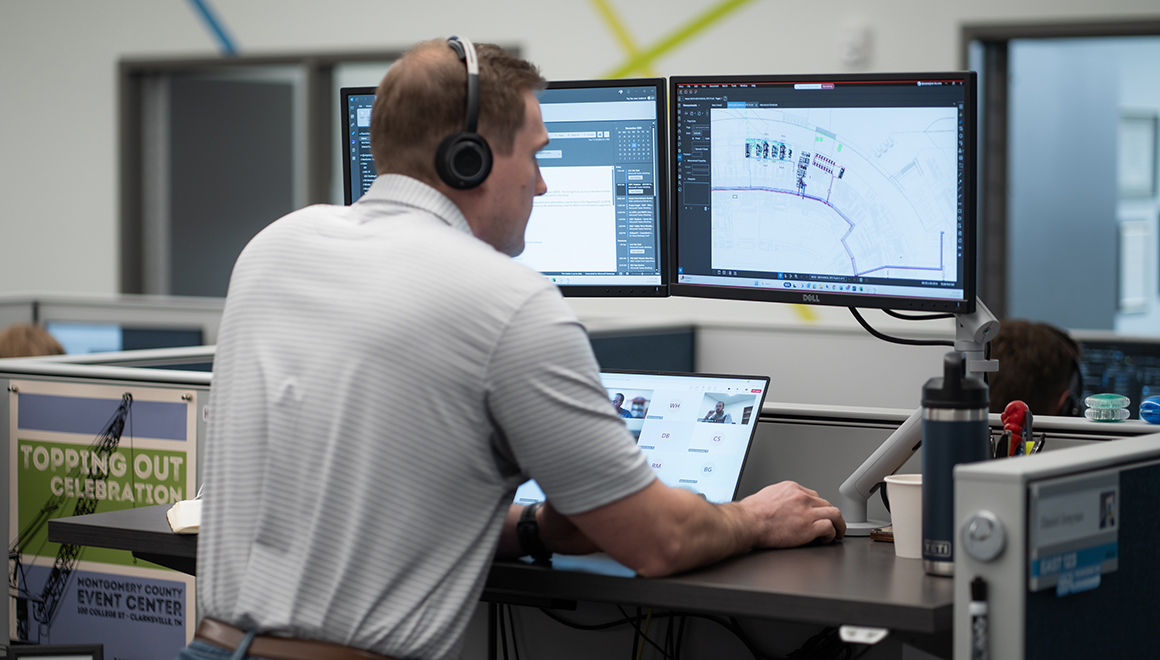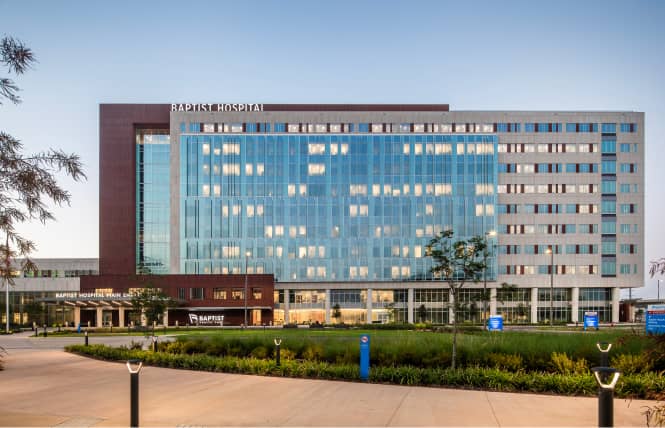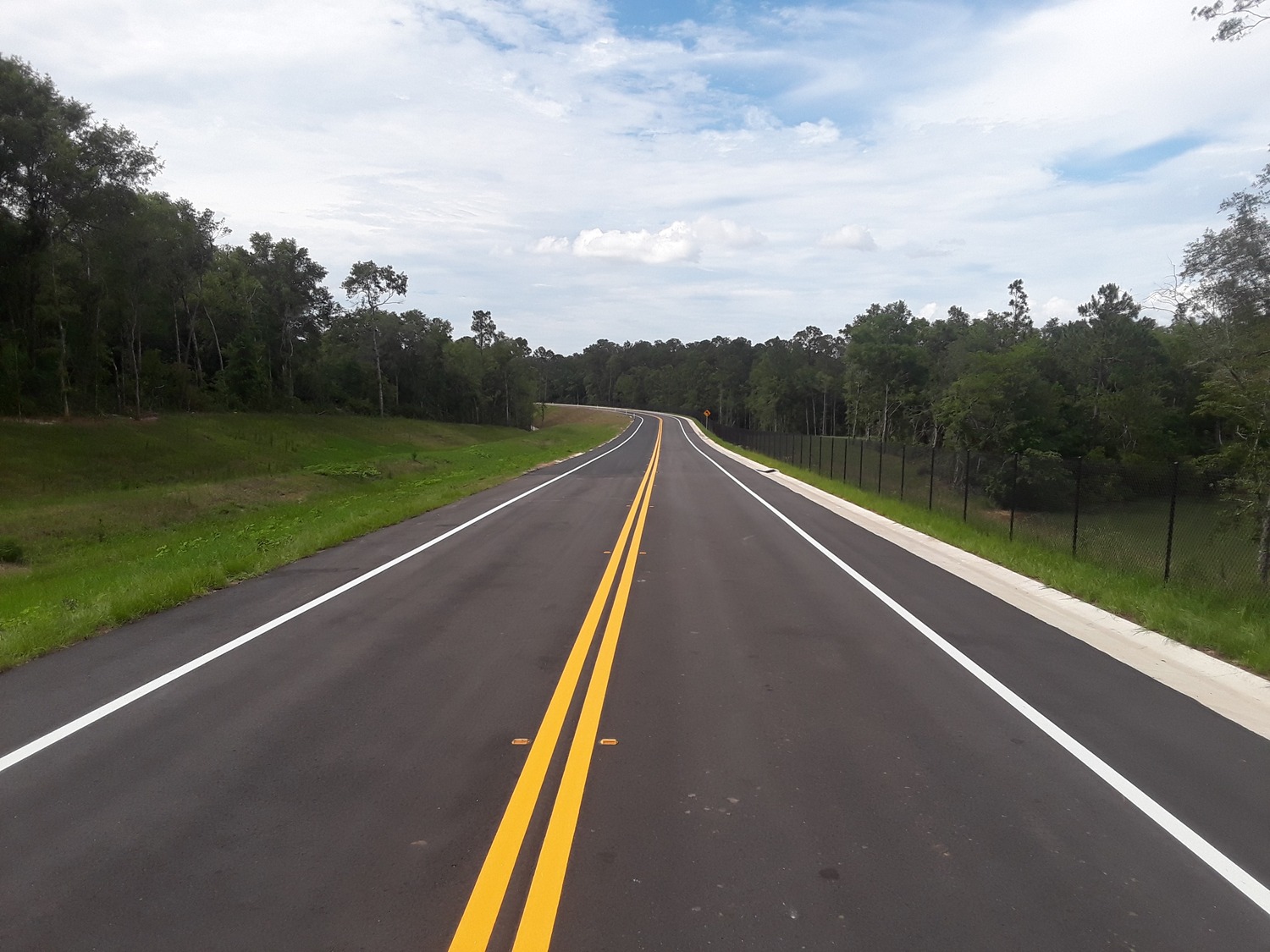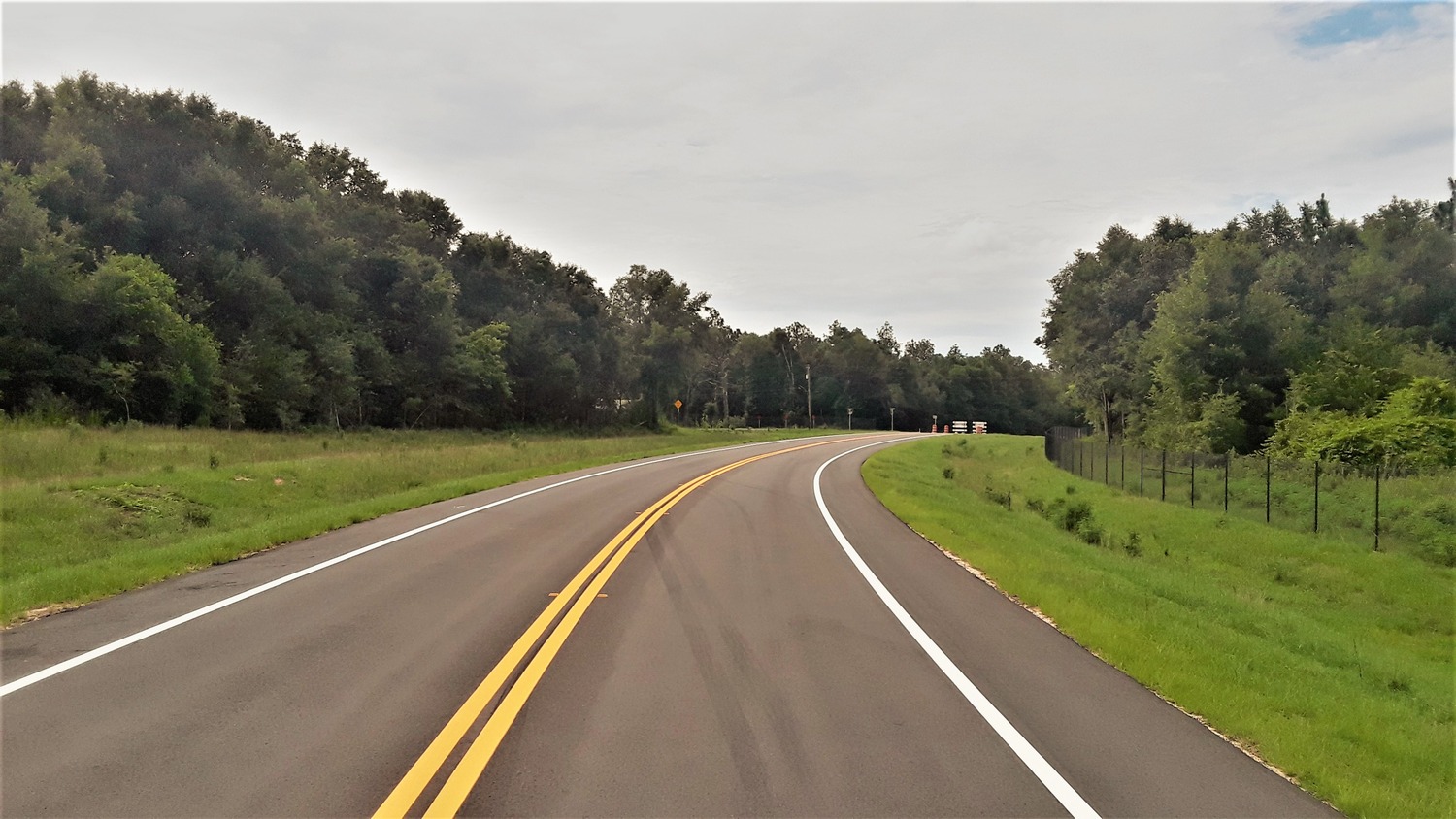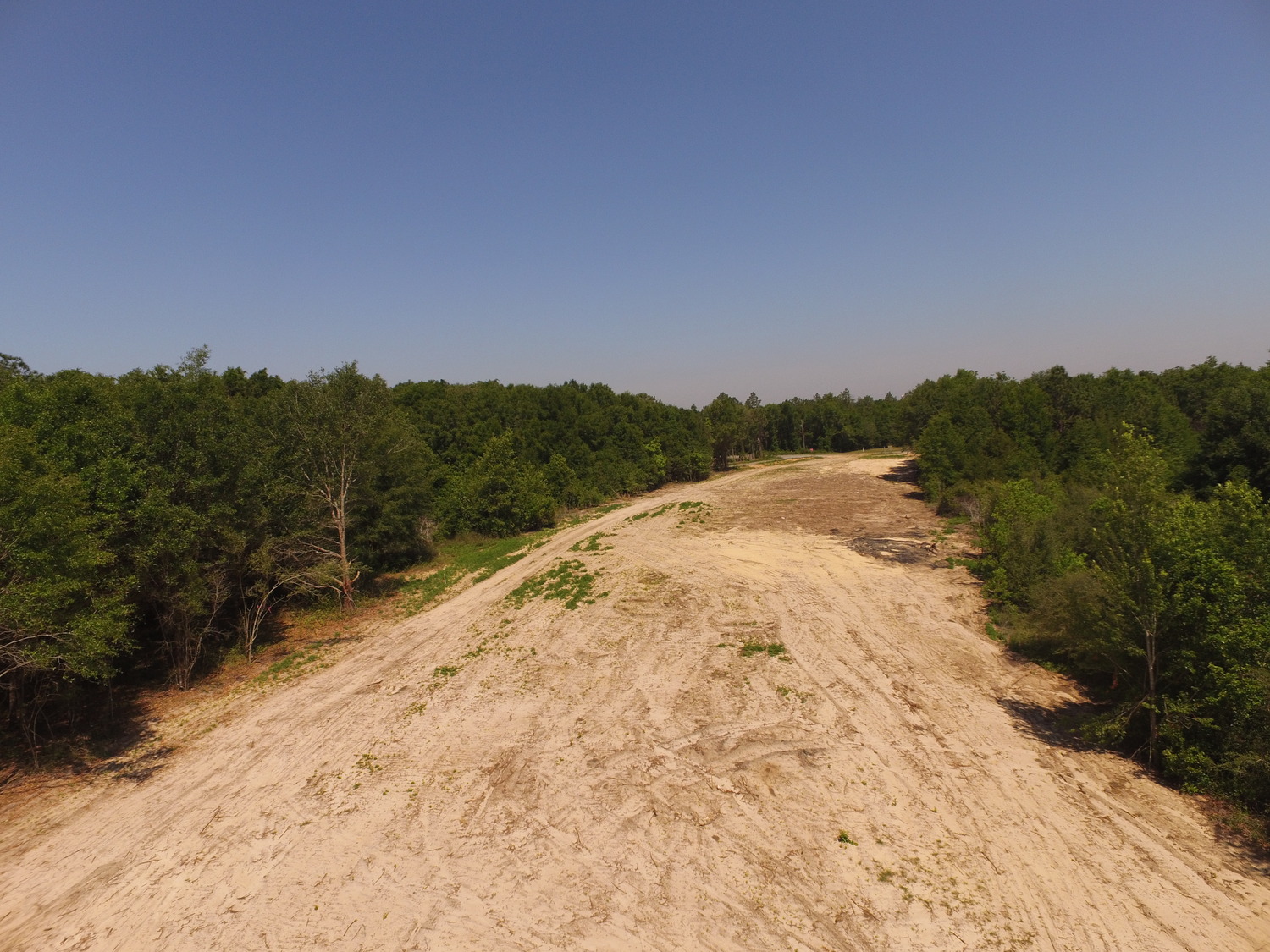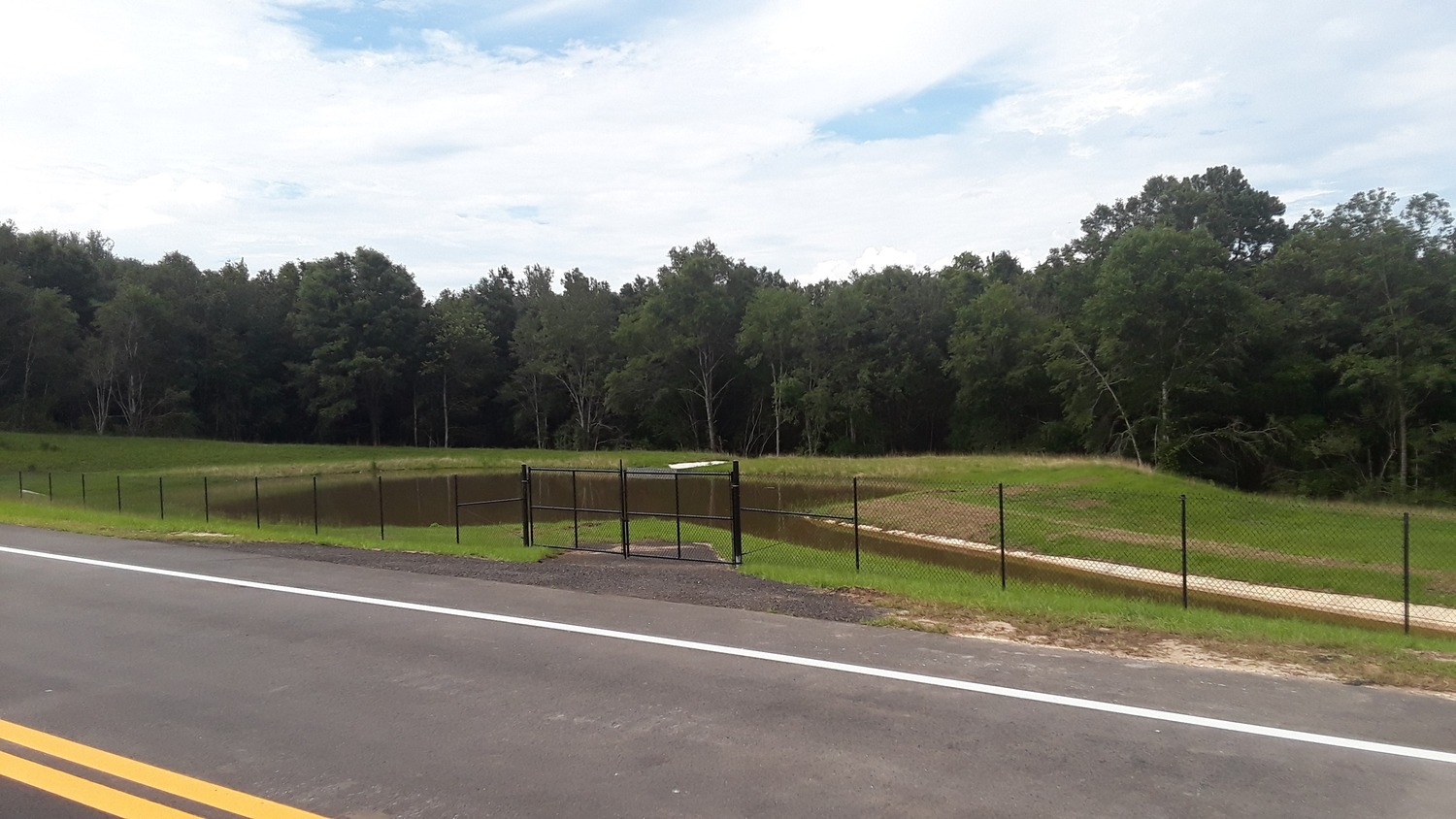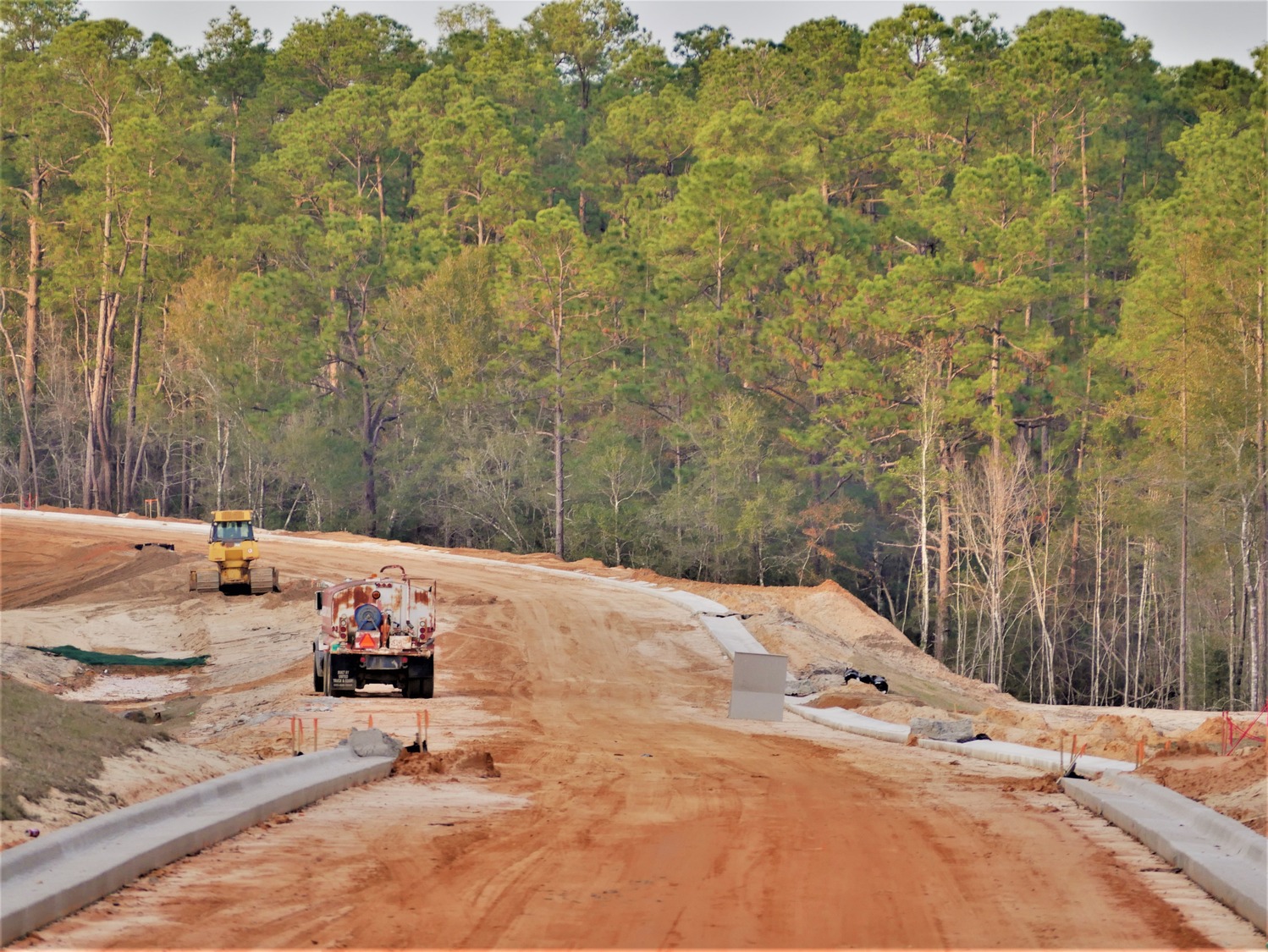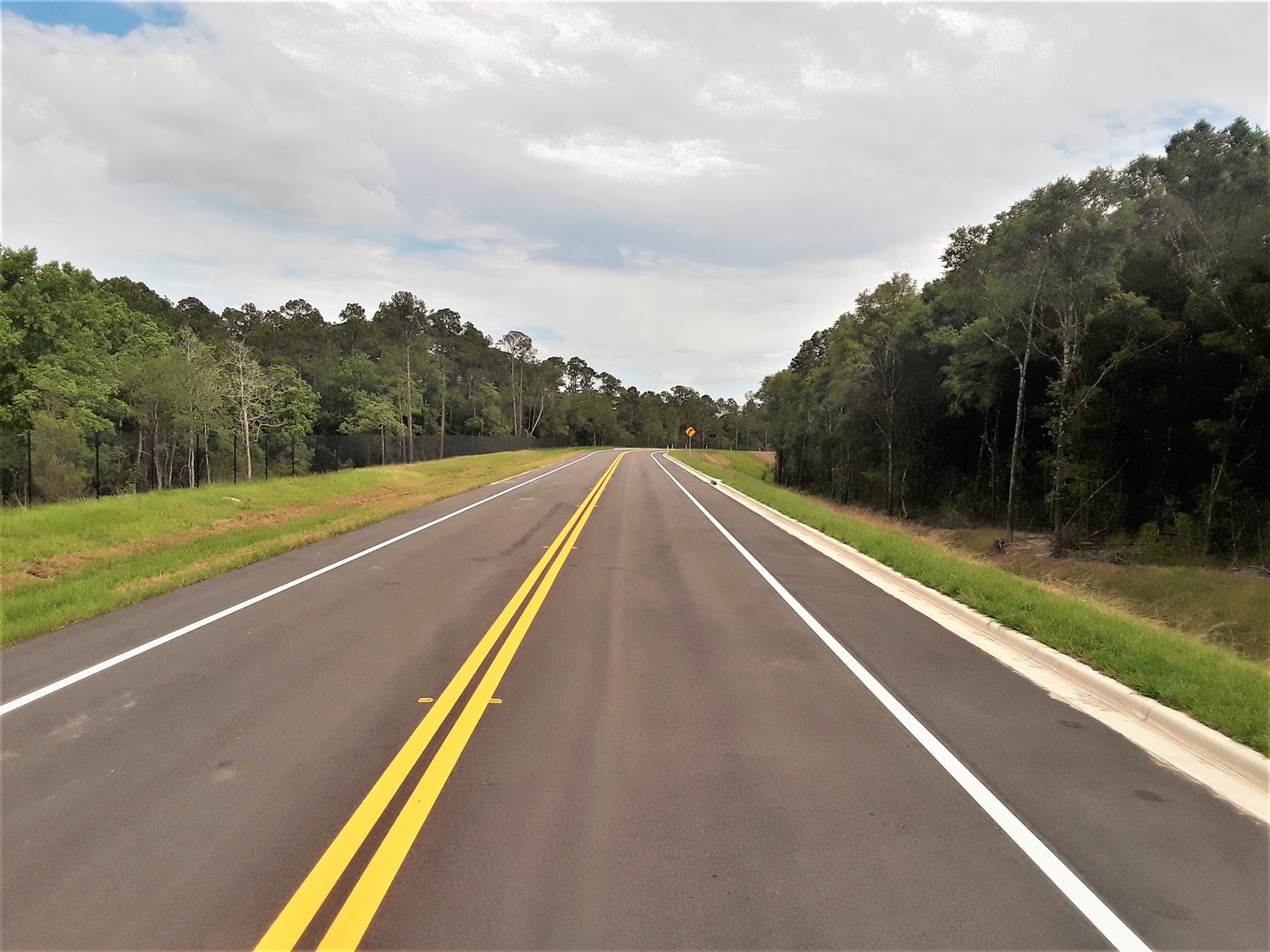A brand-new corridor
Improves access to the Bob Sikes Airport and enables the community to embark on additional expansion.
Prior to the completion of the Foy Shaw Parkway, the only access from U.S. Highway 90 to the Bob Sikes Airport was through a residential neighborhood. The route was inconvenient to airport travelers and led to many complaints from nearby residents. Additionally, the area surrounding the airport, known as the Okaloosa County Industrial Complex, sees a high volume of both local and commercial traffic. The new, two-lane arterial was completed in four phases.
The new Foy Shaw Parkway begins at the intersection of U.S. 90 and S. Cavalier Drive and continues north approximately 0.8 miles connecting to the intersection of John Givens Road and Skyline Drive. The project also added an eastbound left-turn lane and westbound right-turn lane along U.S. 90, and included high fill sections (20 FT+) with over 130,000 CY of embankment hauled in, as well as two major crossdrains consisting of double runs of 60-inch and 72-inch lined steel casing. We provided complete construction engineering and inspection (CEI) services which involved administering the construction contract from the preconstruction meeting to the final pay estimate and as-built plans, as well as inspecting all work and materials to make sure the project was built in accordance with the contract plans and specifications.
The alignment survey conducted prior to construction was critical as the 0.80-mile roadway was a brand-new corridor through existing wooded acreage, with much of the adjacent property owned by the Okaloosa County Airport Division. The project team encountered high fill areas, crossdrains utilizing steel casings, and additional subsoil excavation during construction. We kept the client informed at all times through progress meetings and daily communication which resulted in timely and informed decisions. This greatly minimized additional work orders, cost, and project delays.
Through our diligent and proactive management style the project was completed in approximately 15 months and under budget, which gave the County Airport Division the additional funds to rehabilitate the corner lot at U.S. 90 and Foy Shaw Parkway. This additional work included the demolition of an old County building, removal of an office trailer, and the design, acquisition, and installation of a new Bob Sikes Airport illuminated sign.
With increased accessibility to the area, the Okaloosa Board of County Commissioners approved the expansion of the Bob Sikes Airport to accommodate a new state-of-the-art aircraft hangar as well as to host half of the operation base of Gulf Air Group. This advancement will bring new jobs to the Crestview area, with the Foy Shaw Parkway providing a direct route for these new employees.
